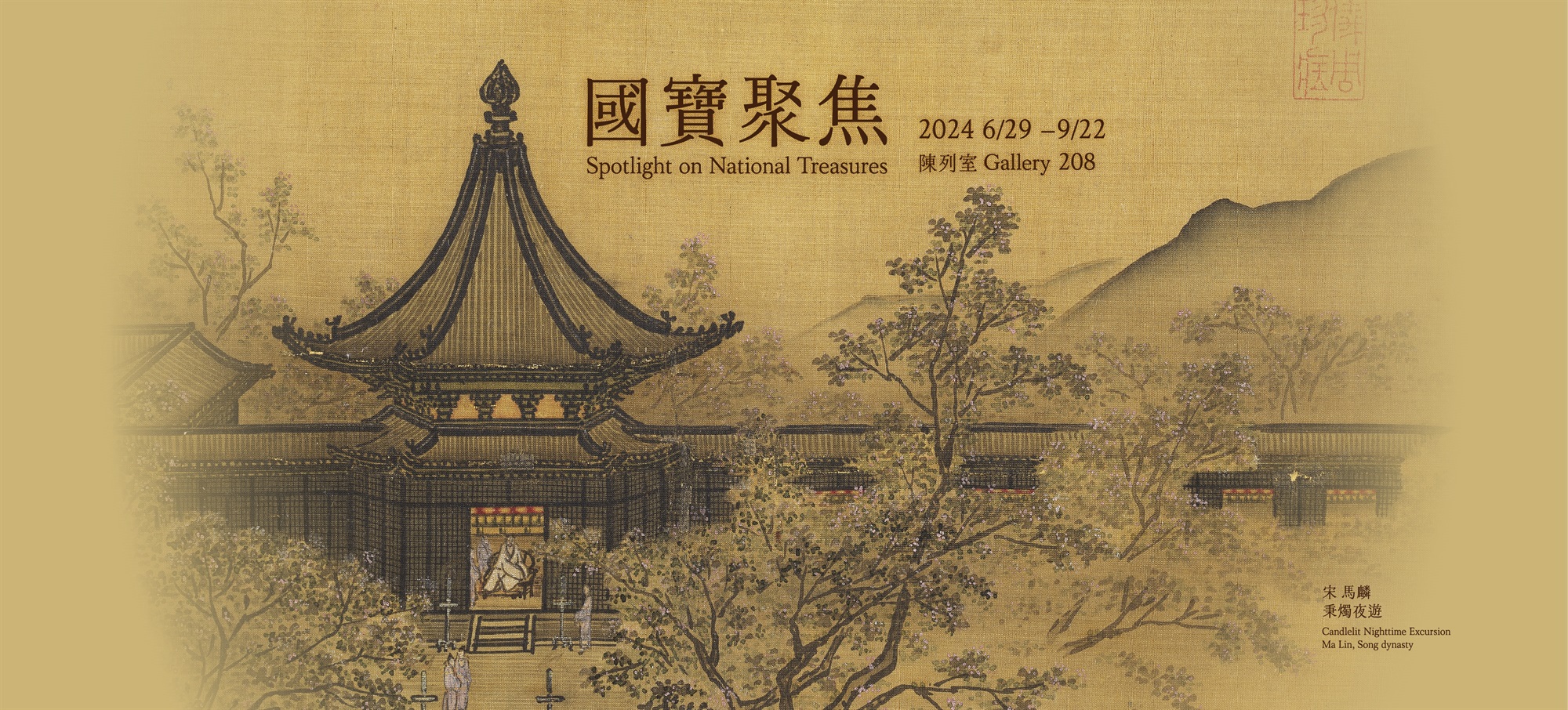Candlelit Nighttime Excursion
Chinese flowering apple trees (Malus spectabilis) in full bloom grace this painting’s foreground. In its lower left can be seen a small path lined with tall, lit candles perched on holders, a feature that draws the viewer’s attention towards the palace in the background. The painting’s primary human subject sits semi-reclined on a circular chair inside of the structure, looking highly contented as he gazes appreciatively on the flowers outside. The building, which has hexagonal eaves rising to a sharp point, was likely part of the scenery in the imperial palaces of Hangzhou during the Southern Song dynasty.
The lower right hand portion of this painting bears an inscription reading, “Your servant, Ma Lin.” Ma Lin, who was active in the 13th century, was the son of the southern Song dynasty court painter Ma Yuan (1162-1233). His work was deeply appreciated by Song dynasty emperors Ningzong (1168-1224) and Lizong (1205-1264), as well as Empress Consort Yang (1162-1233). This painting is probably based on a poem written by the Northern Song dynasty literatus Su Shi (1037-1101) that was named after Chinese flowering apple trees. Ma used burning candles and a bright moon suspended above the palatial corridors to intimate the romance of enjoying Malus spectabilis flowers under the cover of night.
Exploring the Poem
東風嫋嫋泛崇光,香霧空濛月轉廊。
只恐夜深花睡去,故燒高燭照紅妝。
(宋)蘇軾〈海棠〉
Song dynasty scholar-official Su Shi (also known as Su Dongpo, 1037-1101) wrote the poem “Flowering Apple Trees” in the seventh year of Emperor Shenzong’s Yuanfeng reign period (1084). At this time, Su was banished to Huangzhou (present day Huanggang in China’s Hubei province) precisely because he had been accused of subtly slandering the emperor in his poetry. While the painting “Candlelit Nighttime Excursion” derives from Su’s poem, it adapts this piece of lyric poetry into a scene of flower appreciation in the imperial palace gardens.
上皇笑曰:「豈妃子醉,直海棠睡未足耳。」
(宋)樂史(930-1007)《楊太真外傳》
According to the Buddhist monk Shi Huihong’s (1071-1128) Nighttime Chats in the Frigid Studio, Su Shi’s poem “Flowering Apple Trees” alludes to a possibly apocryphal tale from the Tang dynasty court. The story has it that once upon a time, Emperor Xuanzong (685-762) was in the Agarwood Pavilion when he summoned his consort, Yang Guifei (719-765), who turned out to be too drunk from wine to properly bow before the emperor. Xuanzong then compared Yang to a Malus spectabilis flower that was woken up before getting a full day’s sleep.
The Painting’s Details
The Origin of the Painting’s Title
生年不滿百,常懷千歲憂。
晝短苦夜長,何不秉燭遊。
為樂當及時,何能待來茲。
愚者愛惜費,但為後世嗤。
仙人王子喬,難可與等期。
(東漢)《古詩十九首》之〈生年不滿百〉
而浮生若夢,為歡幾何?
古人秉燭夜遊,良有以也。
(唐)李白〈春夜宴從弟桃花園序〉
The title “Candlelit Nighttime Excursion” is an allusion to a poem called “Life Doesn’t Last a Hundred Years” found in an Eastern Han dynasty (25-220) anthology entitled Nineteen Ancient Poems. The Tang dynasty poet Li Bai (701-762) also alluded to this poem in one of his works, “Spring Evening Feast with My Brothers at the Plum Blossom Garden.” Both pieces of verse lament the brevity of human life while reminding readers to seize the day and find joy in the present moment.
Exhibit List
左右滑動觀看完整表格
undefined
| NO. | Title | Form | Exhibit Size(cm) | Collection Number |
|---|---|---|---|---|
| 1 | Candlelit Nighttime Excursion Ma Lin, Song dynasty |
Album | 24.8x25.2 | 故畫001257-2 |


